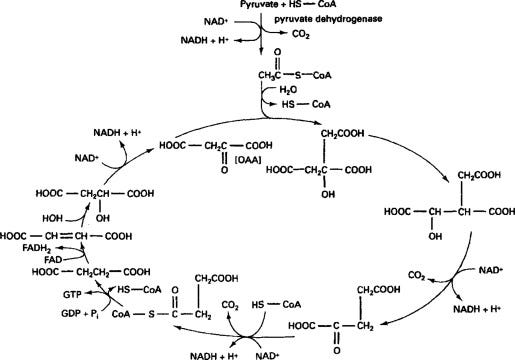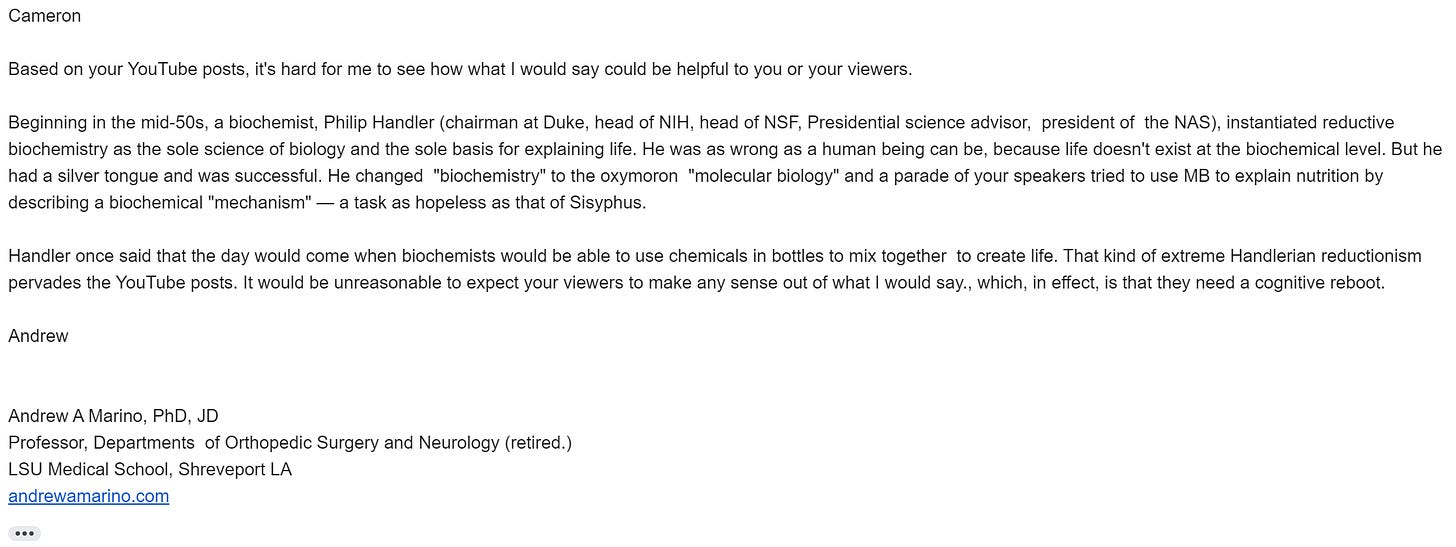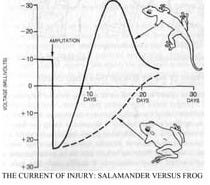Chemistry is taught in a way that seems to deliberately hide the true nature of reactions and products. Particularly in the case of biochemistry, there is little to no discussion as to how certain substrates, cofactors and enzymes are capable of so efficiently and coherently uniting in the busy milieu of biological systems, forming reliable and continuous self-regulating cycles. Explanations are effectively limited to arrows pointing from substrate to product, with the implicit message being, 'it just happens'. Students tend to learn quickly not to dig deeper as accepting the arrows of chemistry will help you pass your exams. But I always felt so uneasy with pictorials representing chemical changes. I always wondered, what do the arrows really mean? How on earth did the substrate, cofactor and enzyme 'know' where each other was, let alone combining in the right manner as to produce new products? How are all of these reactions coordinated in such a way as to maintain homeostasis under dynamic environmental conditions?

In chemistry, arrows are used to denote changes from one chemical to another through the addition or subtraction of substrates. In some sense, this seems rather banal to examine, but in the context of biology, it becomes a curiosity. The body is complex and reactionary, never being in the same configuration twice. Resources and environmental signals shift from femtosecond to femtosecond. How is it that oxaloacetate and citrate so reliably condense together at the beginning of the TCA cycle without reacting with other molecules or risking not being at the right place at the right time? Is this process purely governed by chance (Brownian motion), or are there other factors that influence their union in the right place at the right time? These are the questions that arrows of chemistry fail to address.1 Such questions were the exact ones Robert O. Becker was trying to answer as his focus sharped towards an electromagnetic basis of life; not a biochemical one.
“What is the difference between a live rat and a dead rat? It’s not biochemistry!”
-Andrew Marino on Robert O. Becker
In laboratory settings where as many external influences are reduced as much as humanly possible to isolate chemical reactions, the outcomes may not accurately represent what goes on in the human body. The best example of this is the well known asterisk* that must follow claims that certain foods or food-derived molecules 'kill cancer'. The asterisk typically denotes that such a result is derived from an in-vitro model. This is where cells are cultured in a growth medium in a lab2 and then incubated with various extracts or foodstuffs to monitor growth activity.
In-vitro models are notoriously poor predictors when it comes to anti-oncogenic properties of dietary compounds3 as these models take an anti-gestalt4 approach to cancer. Isolating the cancerous cells to study effects of various compounds on growth dynamics assumes that other aspects of the organism do not play any roles in regulation or communication. This is precisely the conceptual framework taught in chemistry; that reactions either happen, or they don't, but we don't explore the guiding forces that govern the outcomes.
“In theory, theory and practice are the same. In practice, they are not.”
-Albert Einstein

The crux of this story comes back to an email exchange I had with the great Andrew Marino. Marino was a PhD student in Robert O. Becker's lab in the 1960s and 1970s where he was involved in scientific investigations on electromagnetism and life. They were among the last generation of researchers who were not specialists in niche fields, but rather career scientists; experts of science in general. Because Marino and Becker were not pigeonholed into a specific field of study (and had lavish Veteran’s Association grants), they ostensibly sought to understand the difference between and live rat and a rat that had just died. Becker focused on electromagnetic forces as the answer to such a question certainly was “not biochemistry”. So what we saw from Becker and Marino was a deep understanding that biochemistry was a downstream (but still important) process shaped by electromagnetism. The arrows of chemistry are indeed governed by fields. One cannot understand biochemistry without first understanding bioenergetics and the physics that accompany it.
“Molecular biology is an oxymoron, because biology is not molecular.”
-Andrew A. Marino

The idea that biological electromagnetic fields play a role in orchestrating biochemical reactions should not be all that shocking. The movement of charges particles in the body generates electromagnetic fields. There is obviously no debating the idea of a human biofield as this is precisely what is being measured during things like an EEG. Unfortunately, terms like 'biofield' have a specific connotation related to ‘quackery’ and ‘snake-oil’ in general. This should not be the case at all. With trillions of mitochondria that generate enormous mobile charge gradients and magnetic fluids constantly flowing through our bodies, it should be of no surprise that these fields have co-evolved to guide and coherently coordinate the processes of the body.
This is what Becker studied when looking at the perturbations in the current of injury. When a plant or animal is cut or has a limb amputated, the local region becomes negatively charged relative to the surrounding areas. This charge essentially recruits the requisite cells and chemical mediators to the site where healing could begin. Note that the electromagnetic perturbation is the initiating factor from which biochemical processes are called to action. If this current is artificially removed, healing or regeneration would not occur. From this perspective it is easy to see why Marino is so staunch in is assertion (correctly) that biochemistry is a downstream manifestation of bioelectromagnetic phenomena.





